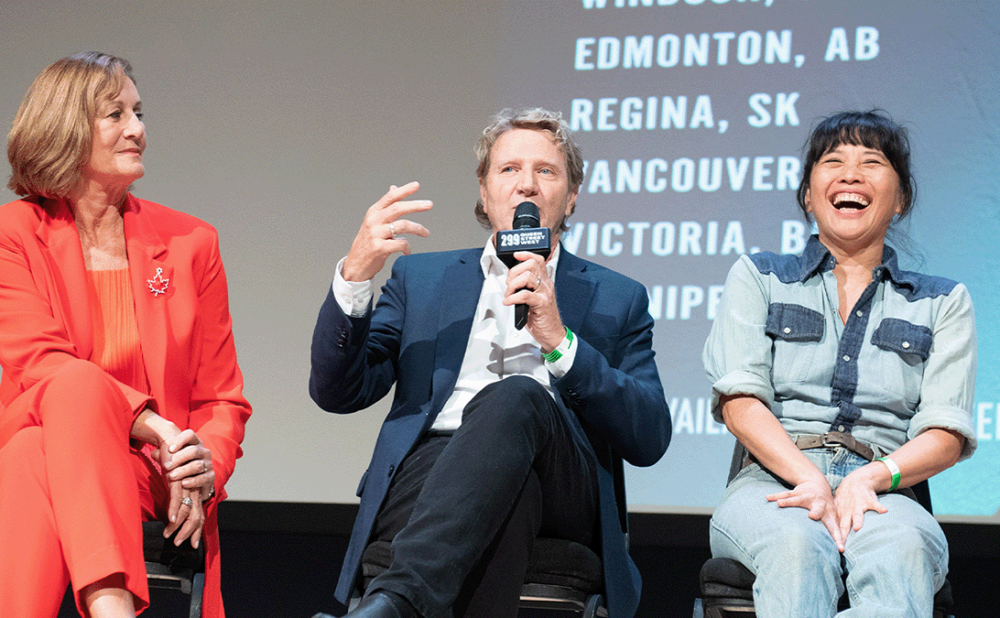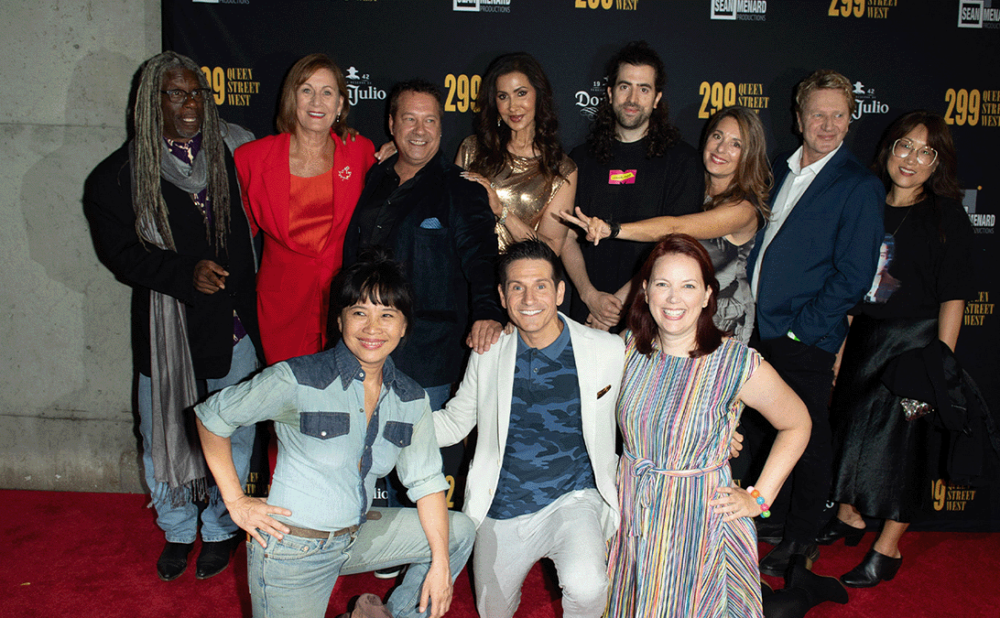MuchMusic documentary more fan love letter than doc
“299 Queen Street West” leaves much of once-important station’s story untold
299 Queen Street West
Where: In limited theatres, streaming on Crave
What: Movie, 118 mins.
When: In theatres now; on Crave in Nov.
Genre: Documentary
Rating: NNN (out of 5)
Why you should watch: If you don’t mind an unapologetic love letter to the core group of MuchMusic VJs rather than a doc, this can be fun.
THE MUCHMUSIC DOCUMENTARY, 299 Queen Street West, is more a love letter to a core group of VJs at what was once “The Nation’s Music Station” rather than a documentary.
The film was screened to over 1,500 at Roy Thomson Hall Friday night at a joyous event that rightfully celebrated the station’s VJs, many converted amateurs who ended up on TVs nationwide. Great to see pioneers like: Denise Donlon, Erica Ehm, Sook-Yin Lee and Monika Deol deservedly acknowledged for their important work in the boys’ club of the music world. Michael Williams’s pioneering efforts in building hip hop in Canada also earned deserved praise in the film and the post-screening Q&A.
Director Sean Menard spends the bulk of the film on how Much was “cooler than MTV,” lionizing a handful of VJs and establishing the ad hoc nature of the live broadcasts over and over and over again.
And the VJs being celebrated are all worthy of praise, many of them groundbreakers in their way. But in telling this tale, he leaves so many Much stories untold.
Launching my old magazine, NOW, a few years before Much started, I had a ringside seat on the fun phenomenon — the launch party was one for the ages. I fondly recall Much founder Moses Znaimer’s boyish enthusiasm when he showed me around the empty, messy 299 Queen St. W. building shortly after his company bought it, his eyes big as he assured me the walls would be coming down and there would be no studios — all of which he did.
Znaimer is virtually invisible in the film, which grossly misrepresents the truth. A controversial figure, Znaimer, along with a great team of visionaries including John Martin, really did bring broadcast music journalism to Canada first, with the syndicated The New Music program and then with Much.
Znaimer’s virtual absence from the film is so glaring — the film doesn’t even use archival interviews to fill the gap if he had refused to give them interviews — that it needs to be explained, not glossed over.
We get a steady stream of VJs speaking with international stars — which is cool — but Much’s role in building Canadian music is virtually ignored. In fact, the film offers an almost shameful and certainly embarrassing “reel” of Canadian acts jammed in at the very end of the film to show they knew of their existence.
But Much made a priority of featuring Canadian acts and giving them the same star treatment they’d give big-name foreign acts. We took pride in covering indie acts at NOW when we launched in the ’80s and many of the same bands managed to get their videos on Much helping grow a Queen Street scene that yielded many enduring stars.
Much’s role in helping launch Maestro Fresh Wes is acknowledged in the film, but what of Much’s near-constant streaming of (NOW’s Queen West faves) Blue Rodeo’s indie-produced Try video which helped break the band nationally? The Pursuit of Happiness managed to get their super-indie video on Much and it helped launch I’m An Adult Now into the national consciousness. I could list 50 more bands at least, from The Tragically Hip to Billy Talent, who were similarly helped by Much’s commitment to Canadian music, and the film fails to convey this.
Much was also trailblazing in bringing political coverage to a “youth station,” certainly something that MTV never did and another worthy distinction that should have been noted between the two services. The station covered political conventions, elections and more and definitely helped make voting seem cool. These were massive efforts not driven by commercial interests — nobody was lining up to sponsor coverage — that deserved to be highlighted and praised.
One of my favourite Much personalities, Jennifer Hollett, was among those left out and among other things, she, along with George Stroumboulopoulos, was a leader in bringing meatier, political coverage to Much (Hollett and I lay claim to being “distant” relatives but are not directly related.)
Other Much VJs of note including, Laurie Brown and Teresa Roncon, were also skipped or glossed over.
There is little context in the film: Muchmusic is presented as if in a glass bubble with people lining up outside 229 Queen Street West to peer in but with little contextual mention of the outside world.
And nobody other than VJs is interviewed; for example, we don’t get musicians speaking about what Much meant to them, a pretty obvious miss.
Full points to the filmmaker for not shying away from the “fall of Much,” how it morphed from music into basically a reality TV channel that catered to the mindless cravings of its audience, the days of challenging viewers and playing a key role in music long past.
If you want some cool clips of Ehm and the rest doing mostly goofy interviews with big stars, you won’t be disappointed; if you’re looking for a historical examination of what was once a Canadian cultural phenomenon and an important part of the music scene, you won’t find it here.







